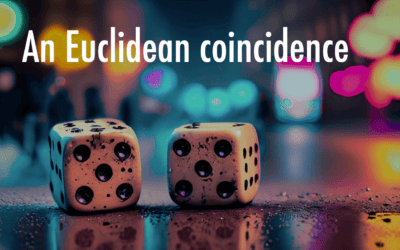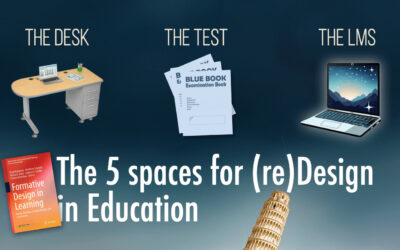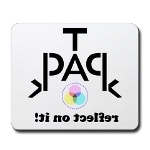My friend and colleague Leigh Wolf forwarded me this article on Edward Tufte: The Many Faces (And Sculptures) Of Edward Tufte. I have been a fan of information design guru Edward Tufte’s work for years (decades?). I love his emphasis on clarity and simplicity in presenting information. I love the fact that he designs and publishes his own books (so that he can have full control over each and every aspect of the presentation). What I didn’t know of was his playful artistic side. It turns out that ET (as he is known) is also an artist, crafting giant metal sculptures in his “back yard” (if you can call the hundreds of acres that stretch behind his house a “back yard!”).
Over the past few years I have been thinking quite hard about the idea that creative people are not creative in just one area but rather tend to play within and across multiple disciplines or areas. Robert and Michele Root-Bernstein have in their book Sparks of Genius often talked about how the most creative scientists are polymaths, often having artistic and other interests that go beyond their immediate professional interests. In fact they argue, and I would tend to agree with them, that creativity cannot be forced into one box or domain. Creative individuals are curious about everything and often engage in creative activities in multiple areas, though they may specialize in just one area (usually the domain they are most known for).
This is true for the most creative people I know. For instance, consider Douglas Hofstadter (best known for his book Godel, Escher & Back and is work in Artificial Intelligence) dabbles in everything from mathematics to music, wordplay to art. Similarly Scott Kim (best know as a puzzle game designer) creates ambigrams and composes music, plays the drums and teaches mathematics using dance!
In my own way I have tried to do the same. Everything I do, from creating ambigrams to teaching, from photography to developing keynote presentations, from being a parent to advising students on their research, seems to me to be connected and inter-woven. I think my success as a researcher and scholar (to whatever extent I have been successful) derives from this “dabbling” across disciplines.
What is sad, however, is how much such “dabbling” is frowned upon. Through high-school and college, through graduate school and even as a faculty member, I have been advised, always by by well-meaning people, to focus, to find my niche, to become an expert on one thing. I have resisted it, mainly because knowing just one thing, seems, at least to me, such an impoverished way of being.
And I understand why I have received the advice I have. We live in a specialized world. A world where expertise is valued. And an expert, after all, is someone who knows more and more about less and less. There is no space for dabbling in this world of.
But I wonder about that. I have a friend who is a successful professor of civil engineering. Turns out, that as he was growing up, what he really wanted to be, was a chef! I haven’t had a chance to talk to him about this but I wonder how his vision of being a chef influences what he does as a researcher and a teacher? Does it contribute (in some subconscious manner) to his work? Or has he suppressed it completely?
Either way I see it as a tragedy, in the first case because we haven’t developed a way of speaking of these influences, and in the second case because a possible, fruitful career was nipped in the bud.
The sad thing is that I am seeing school do the same thing to my kids, in fact to most kids I know. NCLB has not helped either. Don’t get me wrong. This is not an argument for some form of dilletantism (dabbling for the sake of dabbling). Not at all. What I am recommending (thanks to the Roob-Bernstein’s for this term) is polymathy. One of my students, Danah Henriksen, is currently working on a dissertation on looking for polymathy in teachers. As she says:
“Polymathy” may be thought of as an informed enthusiasm for more than one field of knowledge or expertise, or excellence in several realms that might seem distant from each other. It has been suggested that what makes polymaths so successful and fluidly creative is an ability to cross-pollinate ideas and information. People who open their minds to, and who learn from, multiple knowledge areas can apply new information and unique ways of thinking from one discipline into another.
This for me is the biggest reason for supporting such playing around in multiple areas. These experiences at the fringes (so to speak) of our professional lives, provide us with newer ways of being in the world. They allow us to see the world in new ways. They allow us to question things the field may have taken for granted. Just as Tufte says at the end of the piece, my goal, is to “make people see a little differently.” Turns out one of the best and easiest ways of doing so is by seeing through different disciplinary eyes.
We need to provide better opportunities for our students to do the same.




I love the idea of dabbling…it’s a freeing way of describing play, one that gives “permission” of sorts to explore. I agree–we don’t do enough of this in schools, or in life. What if our standards were organized around the idea of dabbling–that in order to create a dynamic curriculum children would be encouraged to dabble–to explore and find their passions and strengths outside the proverbial box. What fun that would be!